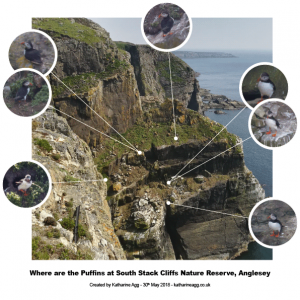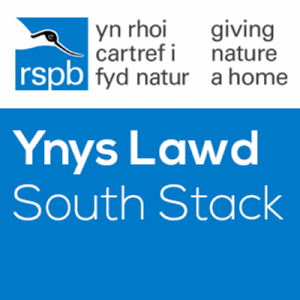Puffins are amazing little creatures, known for their colourful beaks. Little is known about where they go or what they do for most of the year, but when they are on land, they hide out in their burrows to mate and bring a little puffling (yes, that is the actual name for a baby puffin!) into the world.
On the Monday of May half term 2018, I headed to South Stack Cliffs in Holyhead, Anglesey with a rented Canon Sigma 150-600mm lens. After pootling up the A55, asking one of the very patient staff members where the puffins were and scrambling down the steps towards the lighthouse, I stood on the steps, hoping to catch a glimpse of the shy sea birds. Two hours later, my companions had had enough so I, reluctantly, called it a day.
I returned to the steps on Wednesday morning. After about 30 minutes of scouring the guillemot coated cliffs, I let out a squeal as a little orange foot wandered across my viewfinder. In the following two hours, six more adorable tiny birds made their way into my line of sight.
That evening, digging through over 200 photos, I was already struggling to remember where on the cliffs they were. I created this map to jog my memory and as a nice little keepsake for the trip.
I emailed it to the staff at South Stack Cliffs on the off-chance they were interested and to possibly allow them to have a fresh response to the relentless visitor chant, “where are the puffins?”
 If you head to South Stack Cliffs Visitor Centre, you can get your hands on a printed version of this guide and head to the cliffs knowing the best places to look (all they ask is for a small donation to cover printing costs).
If you head to South Stack Cliffs Visitor Centre, you can get your hands on a printed version of this guide and head to the cliffs knowing the best places to look (all they ask is for a small donation to cover printing costs).
 Thank you to the staff and volunteers at the nature reserve for your help and for doing such a wonderful job, and to the puffins for being so adorably colourful.
Thank you to the staff and volunteers at the nature reserve for your help and for doing such a wonderful job, and to the puffins for being so adorably colourful.
Happy puffin hunting.